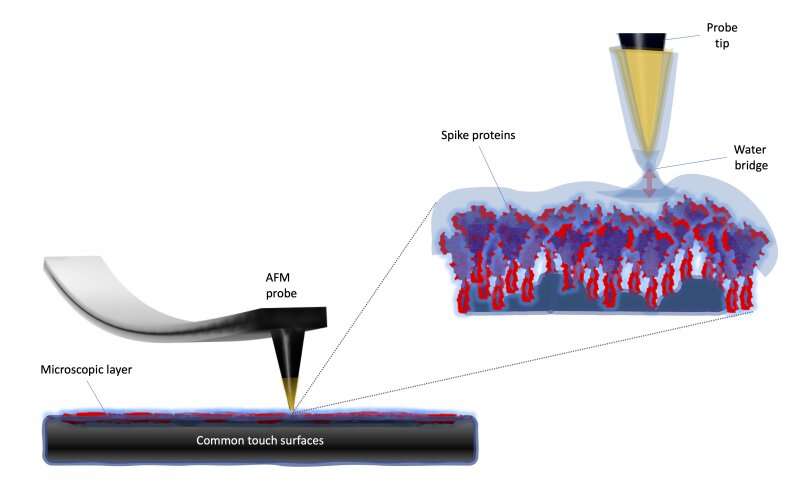Atomic force microscope measures adhesion energy of the coronavirus

A study by Department of Energy researchers detailed a potential method to detect the novel coronavirus on surfaces. Scientists from Pacific Northwest, Oak Ridge, Sandia and Ames national laboratories used an atomic force microscope to measure how easily particles of the virus's spike protein attached to surfaces, a property called adhesion energy.
Funded by the Coronavirus CARES Act, the research also examined ways to chemically identify viral particles collected at the nanoscale level—about 1,000 times smaller than the width of a human hair.
"Our findings show this is a viable potential method to gauge infectious amounts and could lead to a greater understanding of whether particular surfaces carry greater risk for transmitting the virus," said ORNL's Ali Passian, one of the study's authors. "The method can be applied to detect other viruses and could be used to develop antiviral materials for surfaces."
More information: Brian O'Callahan et al, Atomic Force Microscopy and Infrared Nanospectroscopy of COVID-19 Spike Protein for the Quantification of Adhesion to Common Surfaces, Langmuir (2021). DOI: 10.1021/acs.langmuir.1c01910
Journal information: Langmuir
Provided by Oak Ridge National Laboratory



















